The Isle of Rum, part of Scotland’s Inner Hebrides, is known for its thriving and carefully studied population of around 900 red deer and is often regarded as an open-air laboratory for scientific research. But the earthworms on Rum are just as remarkable. These invertebrates act as ‘ecosystem engineers’, actively shaping the landscape, often after humans have left their mark on this remote island.
My research over thirty years has revealed how humans have influenced the current fragmented and uneven distribution, diversity and abundance of earthworms in this national wildlife refuge.
When I took my geography students on field trips to Rum in the mid-1990s, I realized there was room for research into earthworm ecology. One of my PhD students was studying soil development here and quickly alerted me to the differences in the numbers of earthworms found under the different types of trees planted in the late 1950s. More worms lived under birch and oak trees than under pine trees or on unplanted heathlands. This discovery spurred me into action.
Rum’s human history goes back 9,000 years. Early humans came here to collect bloodstone, a flint-like mineral used to make arrowheads and other hunting or cutting tools. The island was deforested by early humans and the wet climate (with more than 2 million rainfall per year) led to the leaching of soil nutrients. The resulting poor quality acidic soil supported heathland plants and low numbers of only three species of earthworms.
If nothing else had happened to the Rum soils, this would be a very boring place to conduct earthworm research.
But subsequent human inhabitants improved the soil enough to make a living as tenant farmers in a few locations along the coast. They used kelp seaweed to fertilize the cultivated land and enrich the soil quality. Then, some 200 years ago, these hard-working people were forcibly removed from their settlements on Rum (and much of Scotland) during the ‘Highland Clearings’.
At locations on Rum such as Harris, Dibidil and Kilmory, distinct ridges and grooves are left in the landscape, nicknamed ‘lazy beds’. These indicate where the land was painstakingly excavated by hand to grow potatoes and other crops. The furrows allowed drainage and the crops were grown on raised ridges. Two centuries after the last cultivation, these soils are still more fertile than the surrounding areas, and they still harbor more earthworms.
In Papadil, another abandoned settlement rarely visited today, a brown forest floor has developed under the trees planted a century ago. Within these trees, colleagues and I found large earthworm burrows with a diameter of about 1 cm. On an island with no badgers and no moles, a good supply of leaf litter for food and little human disturbance, we found Britain’s largest Lumbricus terrestris ever reported in the wild.
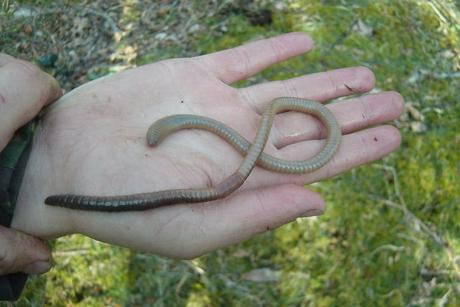
man’s hand open with huge earthworm on palm, green grass in the background
Weighing over 13 grams, about three times the normal weight for this species, these earthworms could have been up to ten years old. This was a really exciting find. We put the worms back in the ground – hopefully they have multiplied.
Wealthy owners of Rum treated this island as a hunting and fishing estate for over a century, keeping most people away from what became known as the ‘Forbidden Island’ in the late 19th to early 20th centuries.
When Kinloch Castle was built in 1897 by textile magnate George Bullough, his wife Lady Monica wanted to grow roses in the garden. To facilitate this and improve the landscape generally, Bullough imported 250,000 tons of good quality Ayrshire soil to spread around their new home. They lived in this castle for only six weeks a year, but this human opulence significantly changed the underground ecosystem.
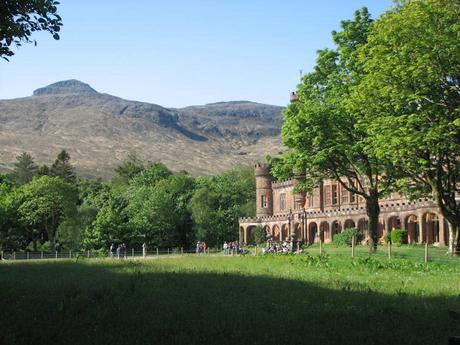
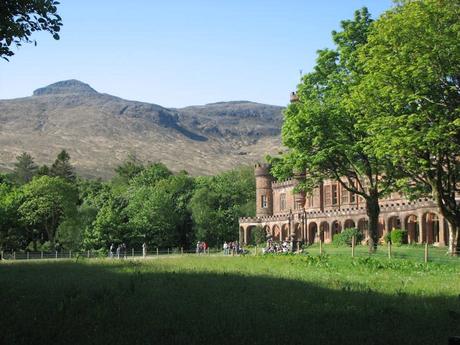
rugged Scottish landscape, grand building on the left with green trees
The imported soil contained earthworms and this community of invertebrates grew around Kinloch Castle. Now twelve species of earthworms – species that prefer soils with a neutral pH – are present in large quantities (200 worms per square meter). Colleagues and I sampled at 50 meter intervals from here (at sea level) to the top of a steep, rocky peak called Hallival. Our research has shown that the wealth and abundance of earthworm species ends abruptly at the wall surrounding the estate – the boundary of the imported land.
Natural soil formers
In addition to human influences, natural processes can also influence soil properties. On the slopes of the peaks of Rum, many patches of bright green vegetation can be found among the rocks at altitudes of 500 to 800 meters. These so-called “shearwater vegetables” are the result of nesting Manx shearwaters.
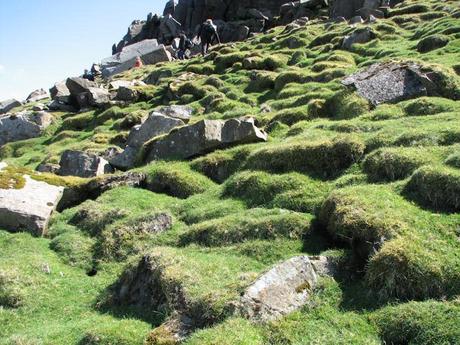
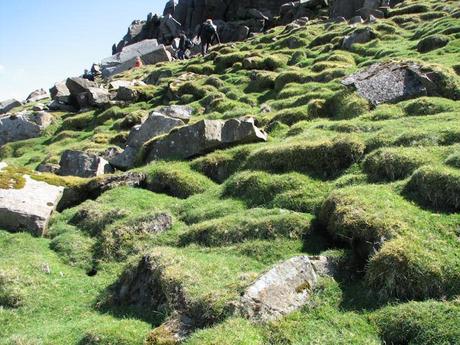
ribbed green grassy hill with gray rocks and clear sky in the background
Pairs of these black and white seabirds burrow into the hills to raise one chick each year before beginning their long-distance migration to South America. The green shearwaters are fertilized from above by the droppings of the adult birds before flying away to look for small fish such as herring and sprat to feed their chicks.
More nutrient-rich feces from the digested fish are also produced by the chicks in the underground burrow, so the soil enrichment comes from a marine source. This supports grass growth and more earthworms – the same three species found on the heath, but in much greater numbers.
On low-lying moorlands, fenced plots keep deer away from trees planted in the 1950s and 1960s, just after Rum became a national nature reserve. Now these protected trees provide roosts for songbirds, and the soil beneath them is rich in earthworms as the litter from the tree leaves adds nutrients to the soil. These plots have led to a small-scale reforestation project that could change this island’s landscape, its soil and its many earthworms.
Rum has produced a number of remarkable findings about earthworms, often linked to human activities or dynamic natural processes. As earthworms shape this ecosystem and natural nutrients are added, the soil changes. Long-term monitoring of Rum could help us better understand landscape transformations and soil health, here and elsewhere.
This article is republished from The Conversation under a Creative Commons license. Read the original article.
The conversation
Kevin Richard Butt does not work for, consult with, own shares in, or receive funding from any company or organization that would benefit from this article, and has disclosed no relevant affiliations beyond his academic appointment.
